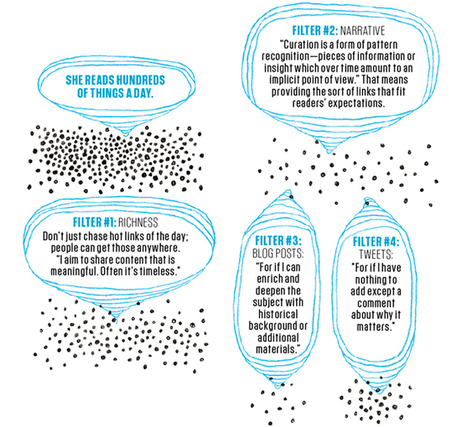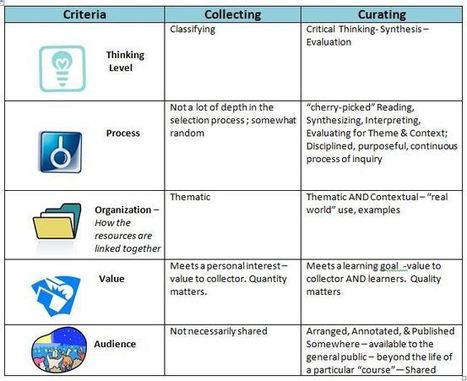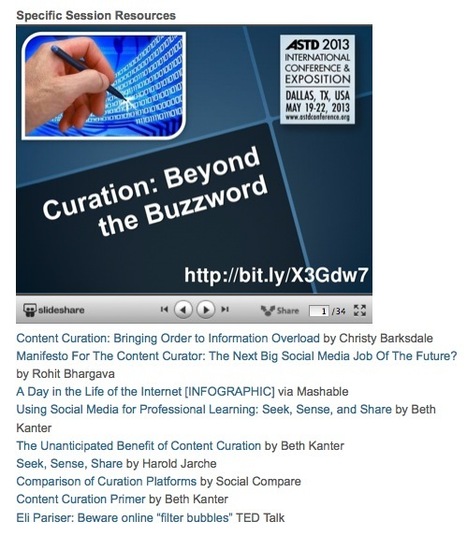Via Robin Good
Research and publish the best content.
Get Started for FREE
Sign up with Facebook Sign up with X
I don't have a Facebook or a X account
Already have an account: Login
Nonprofits struggle with finding the time to create content, but the secret is repurposing, reimagining and curating
Curated by
Beth Kanter
 Your new post is loading... Your new post is loading...
 Your new post is loading... Your new post is loading...

Beth Kanter's comment,
July 8, 2012 1:22 PM
I especially like how she used the Bloom's Taxonomy and related that to curation.
|

wanderingsalsero's curator insight,
May 23, 2013 8:37 PM
This is an evergreen interesting topic. I was especially intrigued with the title up above that said "Social Media Job of The Future". There might be a lot of prescience (sp?) in that choice of words. 
Dawn Adams Miller's curator insight,
May 23, 2013 11:12 PM
Anything from LnD Dave is pure hold and very practical. Enjoy' 
Susan Wegmann's curator insight,
May 24, 2013 8:51 AM
A GREAT resource for the buzzword "Content Curation." Finally! |















The image above amounts to a template for curating a digital space:
Find something timeless to curate.Fit it into a pattern that makes sense.Find a larger context for why this matters.Share widely.I think this fits into Harold Jarche’s simpler seek-sense-share framework.
Why does this matter? If curation is all that Tufte and Bhatt say it is, then why aren’t scaffolds like these being used more often for training and in learning systems? I am using the curation tool Scoop.it to do curation with my freshman comp students. They use Scoop.it as their introductory platform for beginning to acquire the skills Tufte enumerates above that are part of the academic and business spaces they will eventually live in. I am hoping they will demonstrate why it curation matters as they seek-sense-share their way to long and short form ‘texts’ that they will be writing all semester. That will include essays, tweets, G+ community posts, blog posts, research papers, emails, plusses, favs, instagrams, zeegas, slideshares, pictures, and a massive mobile presence from their own digital spaces. Wish me luck.
Interesting links from article and from comments:
http://curation.wikispaces.com/General+References“Digital Media and Learner Identity: The New Curatorship”: http://www.palgraveconnect.com/pc/doifinder/10.1057/9781137004864http://www.lkl.ac.uk/people/potterhttp://digitalcurationandlearning.wordpress.com/http://digitalcurationandlearning.wordpress.com/2014/02/01/curatorship-is-a-new-literacy-practice/http://luke-callahan.com/students-must-curate-create-a-portfolio/The image above amounts to a template for curating a digital space:
1. Find something timeless to curate.
2. Fit it into a pattern that makes sense.
3. Find a larger context for why this matters.
4. Share widely.
I think this fits into Harold Jarche’s simpler seek-sense-share framework.
Why does this matter? If curation is all that Tufte and Bhatt say it is, then why aren’t scaffolds like these being used more often for training and in learning systems? I am using the curation tool Scoop.it to do curation with my freshman comp students. They use Scoop.it as their introductory platform for beginning to acquire the skills Tufte enumerates above that are part of the academic and business spaces they will eventually live in. I am hoping they will demonstrate why it curation matters as they seek-sense-share their way to long and short form ‘texts’ that they will be writing all semester. That will include essays, tweets, G+ community posts, blog posts, research papers, emails, plusses, favs, instagrams, zeegas, slideshares, pictures, and a massive mobile presence from their own digital spaces. Wish me luck.
Interesting links from article and from comments:
http://curation.wikispaces.com/General+References“Digital Media and Learner Identity: The New Curatorship”: http://www.palgraveconnect.com/pc/doifinder/10.1057/9781137004864http://www.lkl.ac.uk/people/potterhttp://digitalcurationandlearning.wordpress.com/http://digitalcurationandlearning.wordpress.com/2014/02/01/curatorship-is-a-new-literacy-practice/http://luke-callahan.com/students-must-curate-create-a-portfolio/
"A curator, therefore, whether she is a journalist-by-proxy such as Popova or a student completing an assignment in a classroom, not only collects and interprets, but also creates a new experience with it."
Creo que esta definición zanja la discusión sobre si un "Content Curator" es una adaptación moderna al "Documentalista" de los medios tradicionales.
De muy recomendada lectura para los que nos dedicamos a la Curación de Contenidos.